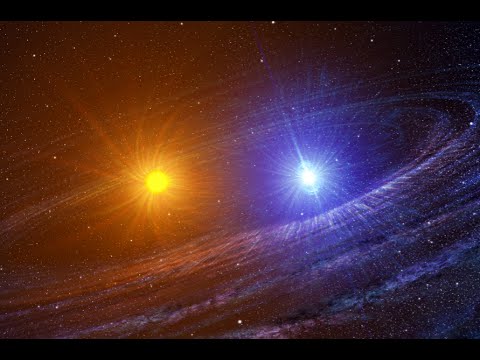BRIEF HISTORY OF DOUBLE STAR DISCOVERIES

Anıl ATALAN - Istanbul University, Institute of Science, Department of Astronomy and Space Sciences, Istanbul
Summary
When we look at it by definition, a double star refers to a system of stars coming from two stars that revolve around a common mass center. Generally speaking, systems with two or more stars are called multi-star systems. The purpose of this work is to explore the early discoveries of the twin stars that make up the basis of multiple star systems and to get a reader's idea of the historical development of one of the important aspects of astronomy.
Introduction
Looking at the historical record, the first pair of stars seen with 'naked eye' is v Sgrdr in the book of Almagest of Ptolemy in about 140 after the milestones. Here, 'nebula and eye double star' is noted in the form. True double star studies began only after the telescope used astronomy in the process that started with the Scientific Revolution. Despite previous statistics and observational studies, the definition of a double star was first used in 1802 by William Herschel in his report "On the Construction of the Universe".
History of Dual Stars Observations
17 . The twin star observations began slowly with the invention of the telescope at the beginning of the century. The first known record is the Mizar observation made by Galileo on January 7, 1617, at the behest of Benedetto Castelli, a student. In the following decade, Castelli and Galileo observed a few more brilliant pairs.
The second record of Mizar's being a double star was made in 1650 by Italian astronomer Jean Baptiste Riccioli in New Almagest. So the discovery of Mizar is often attributed to Riccioli. Similarly, although Orionis in the Orion Nebula was depicted by Huygens as a triple system in 1656, it was already mentioned by Johann Baptist Cysat in 1618 that it was the multiple star of the Orion Nebula.
Along with the spread of telescopes, the number of double star discoveries has increased in the following period. In 1664, Robert Hooke noted that γ Arietis was a double star. In 1685 Father Fontenay discovers α Crucis not seen from Europe because he is a southern star in the Cape of Good Hope. When December of 1689 came, Richaud, a Father, discovered α Centauri during a comet observation in India. In the next century, a few more stars were discovered, but not yet reached a number that would form a catalog.
John Michell and Stars Distribution of Stars on the Sky Globe
In much of astronomy history, stars are thought to have been randomly distributed over the sky. This coincidence has been easily grouped into stars in the sky, and thus constellations have been identified. The fact that Halley examines Sirius, Aldebaran and Acturus in precise observations in 1718 and recognizes that these stars have changed since Ptolemy in the sky has led astronomers to think that there may be a system of stars. Thus, statistical astronomy studies have increased.
On 7 - 14 May 1767, British theorist John Michell was the first person to argue that a statistic could not appear as a coincidental twin, using a statistical argument, that this should be due to a physical interaction. This theory was created by examining the Ülker cluster, one of the easiest star clusters to observe in the sky under the influence of being a priest. This cluster occupies a space of sixty arcs a minute in the sky. Michel Ulker studied the positions of the six brightest stars in the cluster and concluded that the stars were randomly grouped at 496 in the resulting calculations. Michell has published these ideas in the Royal Society, and based his idea that the Newtonian physics can also be applied outside the solar system.
Cataloging of Binary Stars
The real start of the bi-star exploration begins with Christian Mayer and William Herschel in the last quarter of the 18th century. In 1779, Mayer made a catalog with 80 pairs of stars in 1779, and Herschel, who used a high-powered telescope in the same year, cataloged 700 pairs of stars he had discovered and discovered in 1784.
When it came to 1824, William Herschel's son John, along with his wife James South, cataloged 380 stars with their calculations. At the same time, Wilhelm Strove first cataloged 712, then in 1827 cataloged 3112 binary stars. It was the most important catalog and continued to be updated until 1852.
Towards the end of the nineteenth century, he worked on many astronomical binary stars. It was discovered united, it was thought to be a double star. The main reason for this thought, however, is that John Herschel expands his observations from the 1820s and catalogs 10300 binary stars to his death.
After this point, the discovery of binary stars accelerated with the development of modern technology, the growth of telescopes and the introduction of techniques such as spectroscopy into astronomy. There are 1,201,492 binary stars listed today in the Washington Double Star Catalog (WDS).
RESULT
The existence of binary stars is thought from ancient Greece, and science has proven physical after the revolution. This is why statistical mathematics establishes great science to establish astronomical science. Then the developing technology accelerated the discovery of the binary stars and improved the research areas of astrophysics to become the star's evolution, particularly by permitting a more detailed examination of the binary stars.
references
Determining the Nature of Visual Double Stars Using the Theory of Probability, Francisco Rica Romero
Double Stars, Robert W. Argyle
Multiple Suns, Bob Argyle
JOHN MICHELL, COMPETITIONS AND CHILDREN FOR 496,000 DOLLARS, D. W. Hughes and S. Cartwright
DOUBLE STARS DRIVERS, Joseph S. Tenn
Course Course Radboud University, Frank Verbunt
Binary Stars, Robert Grant Aitken, New York, 1918